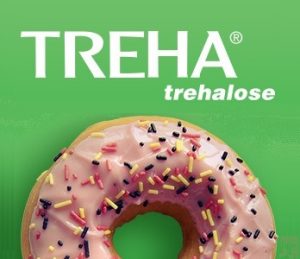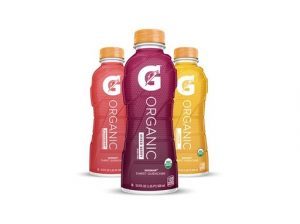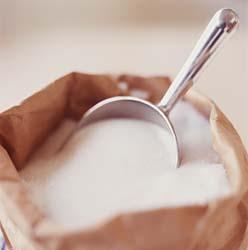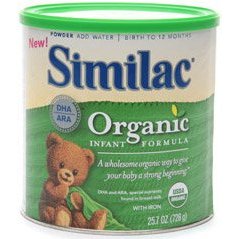Amina Khan of the LA Times reports two bacterial strains that have plagued hospitals around the country may have been at least partly fueled by a sugar additive in our food products, scientists say.
 Trehalose, a sugar that is added to a wide range of food products, could have allowed certain strains of Clostridium difficile to become far more virulent than they were before, a new study finds.
Trehalose, a sugar that is added to a wide range of food products, could have allowed certain strains of Clostridium difficile to become far more virulent than they were before, a new study finds.
The results, described in the journal Nature, highlight the unintended consequences of introducing otherwise harmless additives to the food supply.
- difficile is a nasty bacterium — infection can result in severe diarrhea and death — and numbers among the most prevalent hospital-acquired infections in the United States. According to the Centers for Disease Control and Prevention, nearly half a million peoplewere sickened by the bug in 2011. Some 29,000 of those patients died within 30 days of being diagnosed with C. difficile, and about 15,000 of those deaths were directly linked to the infection.
The disease wasn’t always such a scourge of the sick and hospitalized, and scientists have long been trying to figure out why certain strains have become so successful in recent years. The misuse and overuse of antibiotics has long been thought to be responsible for the rise of many kinds of antibiotic-resistant “superbugs.”
To probe the mystery, a team of scientists led out of Baylor College of Medicine in Texas examined two particularly successful lineages of C. difficile, RT027 and RT078, examining what kind of carbon-rich molecules they ate. Both types, they noticed, seemed very good at using low concentrations of the sugar trehalose as a sole carbon source.
The researchers analyzed the genomes of both RT027 and RT078. While both had RNA sequences that allowed each type to take advantage of trehalose in low doses, they did so in very different ways.
- difficile bacteria have genes that can break trehalose into glucose (a simpler, more useful sugar) and its derivatives. But a special protein called TreR blocks the microbes from metabolizing trehalose unless the concentration of trehalose in the environment is very high.
In RT027, the TreR protein is modified in a way that lowers the bar, allowing the bacteria to metabolize trehalose even in quite low concentrations.
RT078, however, is using a different mechanism to do the same thing, having picked up four genes that are used in taking up and metabolizing trehalose. (Just one of them, it turns out, was responsible for its powered-up ability to grow in small amounts of trehalose.)
Dietary trehalose enhances virulence of epidemic clostridium difficile
Nature, 03 January 2018, J. Collins, C. Robinson, H. Danhof, C. W. Knetsch, H. C. van Leeuwen, T. D. Lawley, J. M. Auchtung& R. A. Britton, doi:10.1038/nature25178
https://www.nature.com/articles/nature25178
\Clostridium difficile disease has recently increased to become a dominant nosocomial pathogen in North America and Europe, although little is known about what has driven this emergence. Here we show that two epidemic ribotypes (RT027 and RT078) have acquired unique mechanisms to metabolize low concentrations of the disaccharide trehalose.
RT027 strains contain a single point mutation in the trehalose repressor that increases the sensitivity of this ribotype to trehalose by more than 500-fold. Furthermore, dietary trehalose increases the virulence of a RT027 strain in a mouse model of infection. RT078 strains acquired a cluster of four genes involved in trehalose metabolism, including a PTS permease that is both necessary and sufficient for growth on low concentrations of trehalose.
We propose that the implementation of trehalose as a food additive into the human diet, shortly before the emergence of these two epidemic lineages, helped select for their emergence and contributed to hypervirulence.






 counterparts in Toronto, where he purchased the sugar.
counterparts in Toronto, where he purchased the sugar. The epidemiological investigation based on interviews with the patients pointed at sugar snaps from Kenya as the source. Shigella was not detected in samples of sugar snaps. However, Escherichia coli was confirmed in three of four samples indicating contamination by faecal material.
The epidemiological investigation based on interviews with the patients pointed at sugar snaps from Kenya as the source. Shigella was not detected in samples of sugar snaps. However, Escherichia coli was confirmed in three of four samples indicating contamination by faecal material.  Dr. Benjamin Caballero, director of the Center for Human Nutrition at the Johns Hopkins Bloomberg School of Public Health and an expert in risk factors for childhood obesity, said,
Dr. Benjamin Caballero, director of the Center for Human Nutrition at the Johns Hopkins Bloomberg School of Public Health and an expert in risk factors for childhood obesity, said,